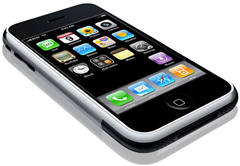ARTICLE: Dan Power "Mobile and Consumer Asset Management"
 Bringing consumer assets into an overall asset management strategy.
Bringing consumer assets into an overall asset management strategy.
This article has been contributed by Dan Power, managing director EMEA for KACE, a systems management and deployment appliance vendor.
Asset management is one of those areas where companies of all sizes stand to get the most return from their investment, simply by making better use of their existing IT. In the current economic climate, re-using assets more efficiently and cutting down on expenditure that is not necessary for the business is a fast route to making significant savings. There has also been an increased usage of “consumer” devices that are being used for work purposes: from USB sticks to easily carry data around, through to individual users with their Apple iPhones, the end-user is more technology-savvy than every before.
From an asset management point of view, the emergence of consumer devices is an interesting one. The iPhone for business use is a good example. As users want to make the most of their own handset, or a business wants to roll-out multiple devices to a number of users, there is an opportunity to make users more productive. However, this potential benefit can’t come at the expense of additional overhead for the IT team. The tools have to be there for IT to support a consumer device just like any other company asset.
Some organisations are experimenting with making their staff responsible for their own support, either through allocating a budget to each user or by letting them pick their own IT resources. While this is ideal in theory, it only really works for organisations where users are extremely comfortable with technology and there is less reliance on a corporate IT policy. There may also be issues in integrating different applications, security settings and networking products: while the cost is supposed to fall on the user, the IT team will still have to invest in extra support resources.
There is also a higher overhead to consider in terms of manually managing a deployment, as well as the risk that business data can be lost when a handset goes missing. If a user has sensitive company data on their smartphone, then it becomes an issue for the business. Managing iPhone devices in particular is growing as an issue, due to their sheer popularity and the ability to support full documents.
The reality is that most businesses want a systematic and managed approach to their IT. Looking to the future, any organisation considering asset management should look at how mobile devices, from iPhones and netbooks through to laptops, can be supported by the business, as well as what policy the company puts in place around them for the future.
Asset management is one of the biggest issues for businesses, and the consumer device is only adding to the problem. It is still largely an untapped area for investment particularly in the mid-market where organisations have not had the tools that would fit in with their needs. Many organisations still struggle to know exactly what resources are in use, and what devices have been brought in by users without their knowledge.
IT managers often recognise the value that these consumer devices can offer to users, and often would like to either support them properly or roll them out as part of their IT strategy. However, these new investments often don’t get made because too much time is spent on ongoing IT management. Typical IT budgets are split with between 70 and 80 percent going on maintenance costs, leaving precious little for the real innovation and value that IT can provide. Without a real asset management strategy in place, IT either can’t afford to invest for the future, or projects won’t deliver the results they promised. Looking at asset management, it can provide the basis for long-term, strategic success.
This article has been contributed by Dan Power, managing director EMEA for KACE, a systems management and deployment appliance vendor.
What are your experiences of managing mobile and consumer devices?
Can’t find what you’re looking for?
More from ITAM News & Analysis
-
ITAMantics - April 2024
Welcome to the April 2024 edition of ITAMantics, our monthly news podcast where we discuss the biggest ITAM stories from the last month. George is joined this month by AJ Witt and Ryan Stefani. Stories tackled ... -
Broadcom is removing expired VMware licences from its portal - take action now!
Hot on the heels of Broadcom’s announcement of the end of perpetual licences for VMware it has given customers barely a week to download any keys for licenses from its portal with expired support. This is ... -
Who Loses When Broadcom Wins?
News of a new Broadcom deal rarely arrives with great fanfare. The November 2023 VMware acquisition provoked open worry online and in business circles, with many critics wondering whether the former Hewlett-Packard spinoff’s reputation would prove ...
